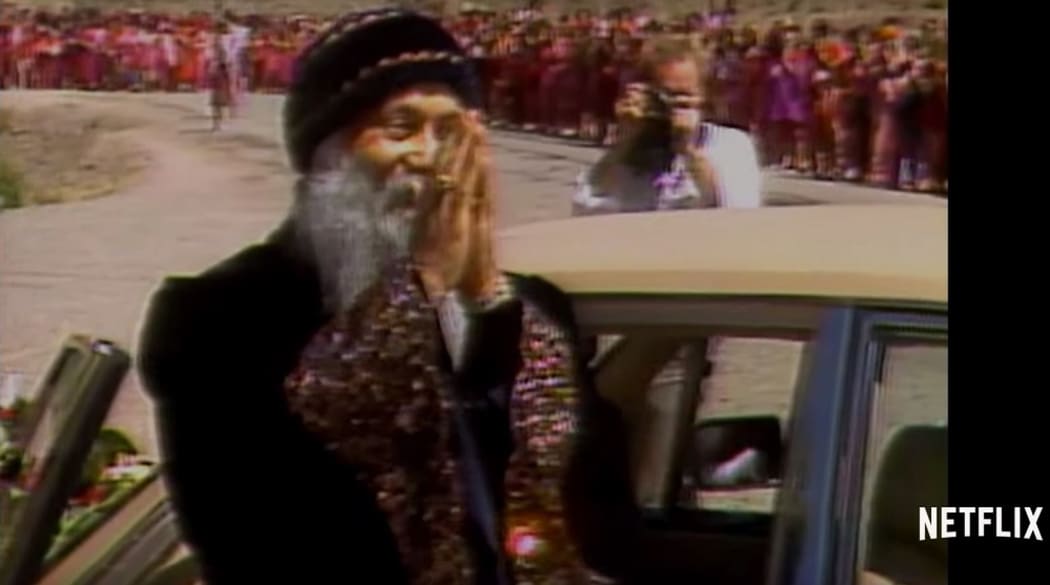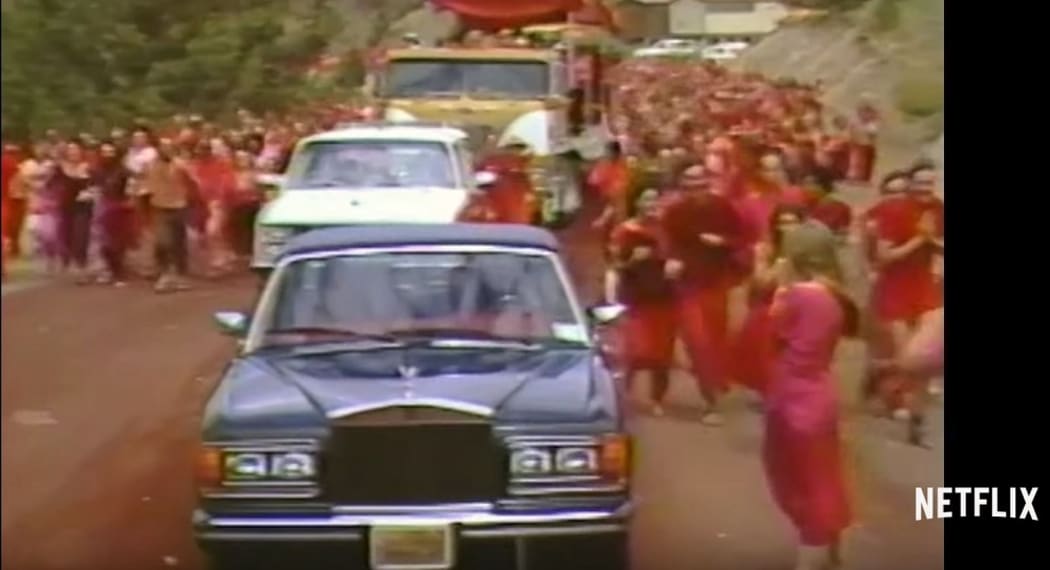Could this story of a cult taking on middle America have worked out, if everyone had just been a bit… nicer?
Please if you're going to read this and you haven't watched Wild Wild Country yet be aware that there are some SPOILERS, but not too many, ok? Thanks.
Antelope, Oregon, 1981. Population: 50 odd. Amenities: a café, a school, a post office, and a church. It was the place to retire and live quietly, buy that house you couldn’t afford elsewhere, build a ranch, and do ranch-y things. You know everyone, everyone knows you, you all exist in neighbourly harmony and do shit like sit at the local (only) café presumably to chat about white people things (seriously, they’re all white).
It was, you know, safe.
That is, until the Bhagwan, the supreme guru came-a-rolling in in his Rolls-Royce with his horde of adoring worshippers, the Rajneeshees, clad in a particularly putrid shade of magenta. Not to worry, they don’t stay in that the whole time cos there’s plenty of “dynamic meditation” (read: writhing around naked while screaming), skinnydipping, and public boning.
None of this sits well with the peaceful residents of Antelope, but the Rajneeshee ain’t goin’ nowhere. They’ve come to build a kind of self-sustained communal utopia by the name of Rajneeshpuram and they do a bloody good job of it actually; because the kinds of people who are drawn to Bhagwan are ex-corporate types and baby boomers who rejected puritanical Western values – that is to say, middle class white people with education, professional training, and the cointatas to get this project up and running. They all used to have names like David and Jane, but now they’re called Krishna and Shanti, and it’s not a phase, mom.

Photo: Unknown

Photo: Unknown
I find the Bhagwan (or Osho as he preferred to be known in his last years cos turning Japanese is peak Eastern philosophy even when you’re already an Indian mystic guru fulla) curiously uncharismatic. For someone who’s so popular he’s like, not even that hot. Nor is he very interesting because he doesn’t say much most of the time, preferring to communicate through his right-hand woman, Ma Anand Sheela. Sheela is a sassy lady. She takes no prisoners. She isn’t afraid of the townspeople when they resort to all-American intimidation tactics like wearing bullets around their necks and firing guns and carrying guns and being gun-ny in general. Instead, she goes on 60 Minutes and retorts “what can I say? Tough titties.” And in that moment I’m in love with her a little bit.
It’s not the Rajneeshee way to turn the other cheek when faced with persecution. Bhagwan himself makes sure to declare that he is not Jesus nor Gandhi, and encourages his followers to retaliate. The locals try their damnedest to drive them out but the Rajneeshee are always one step ahead; they buy up all the local businesses and land, rename the streets, and make sure they take over the town in a completely legal – if dastardly – way. Things escalate on both sides. Bombings. More guns. Assassination attempts. A biochemical terror attack to manipulate local election results. Wire tappings. Corruption. It all reads very much like the plot to a 90s blockbuster film, except this is real life, and real people are getting hurt.
Wild Wild Country does a great job in painting everyone in a sympathetic light. One feels for the locals whose peaceful way of life has been obliterated by a horde of strange people, and yet there is exasperation at the utter close mindedness at their attitudes towards Others. Anything that is not Christian and American is an evil to be thwarted, and the Rajneeshee are a serious, dark-sided threat.
The Rajneeshee have effectively invaded and made themselves at home where they weren’t welcome, brazen and gung-ho, with little consideration for local values or an attempt towards assimilation. And yet all they wanted was a place to be free to be themselves, questionable dress code aside. People felt accepted, loved, a part of a community. It begs the question: what if either side had relented, just a little bit? Could it all have worked out?
In the end, after a wild ride, the locals get their town back. A billionaire developer buys up the Rajneeshpuram facilities. The mayor of Antelope notes wryly, “he ended up gifting the thing to Young Life. It’s a Christian Youth Organisation…we went from free sex, the Rajneeshees, to no sex, Young Life…it’s kind of like a cult too. But they’re much better neighbours than the Rajneeshees.” Long live Antelope.
Also, spoiler alert, Osho dies.
They take his body, place it on a podium on the stage, and tens of thousands lift up their hands and cry, “Osho!”. They laugh, they cry, they clap. And in more than any other moment during this documentary I am hit with how palpably hollow it all is, the guru worship, the fetishisation of India, the religiosity. In the end, it was all just for one man who ended up dying just like the rest of us.
They burn his body and place him in an urn. His headstone reads: “Osho: Never born, never died. Only visited this earth between Dec 11 1931 – Jan 19 1990”. That reads like a birth and death date to me, but maybe I’m just not cosmically awake enough. I don’t suit magenta anyway.
Wild Wild Country can be streamed on Netflix.

